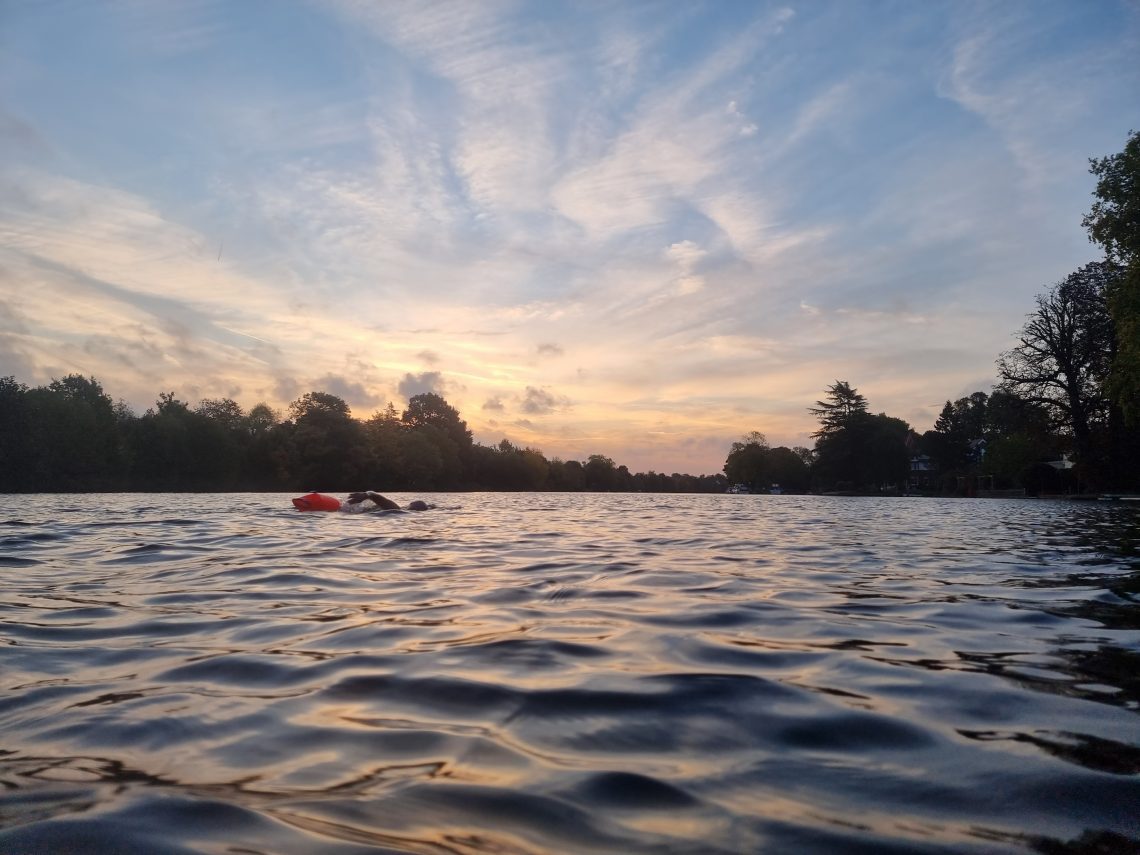
3 reasons why you should keep swimming through winter – and how to do it
When autumn and winter are around the corner and outside water temperatures are creeping downwards, the local pool’s balmy water and heated changing rooms become ever more tempting.
So why do some of us continue to plunge into our favourite open water spots throughout the cold season? Here are three reasons why you should keep swimming through winter – and how to do it.
1. It can help your immune system
Aside from the famous ‘feel-good factor’, usually verified with great gusto by every cold water swimmer you meet (honestly, if you haven’t tried it, do – you’ll see what we mean afterwards), research in 1998 by Dr T Grune at the Clinic for Physical Medicine and Rehabilitation, Humboldt University, Germany, also suggests that consistent and short immersions in cold water may help our immune system.
2. It’s fun – the high stays with you for the whole day
When we ask year-round swimmers why they swim throughout the winter, the overwhelming response is because it is such fun. As one swimmer explained: “In winter, swimming is my favourite social activity. Everyone is always laughing! The speedy getting ready, the knowledge that what you’re doing is slightly barking, the actual getting-in bit, then the exhilaration of being truly awake, followed by the wonderful afterglow – you can’t beat it.”
Another says: “The high stays with you for the whole day – it’s great to know you’ve had an outdoor adventure before breakfast, when everyone else around you is missing out and hiding from the elements.”
3. Anyone can do it
Many swimmers ask me if they need to put on weight to swim through winter. Although I always like to point out that thin penguins are few and far between (which I find a comforting mantra), the short answer is no. People of all shapes and sizes enjoy winter swimming but it does seem to be true that a little padding can help some people stay in the water longer.

Staying safe in cold water
There are, however, some basic safeguards you need to be aware of. First, safety is paramount, and the key point to remember is to never swim alone. This being the case, it is a great delight to see a growing number of clubs and groups across the UK springing into action and embracing the idea of winter swimming, making it feasible for more people to participate. Joining a group, or continuing to swim into winter with your current club, is the best way to approach a winter season of swimming, as this will help you overcome initial obstacles such as seeking permissions and checking out weather conditions, as most groups already do this for you.
Secondly, be aware of your limits and don’t stay in the water for too long: even a minute or two is long enough at first. Take advice from those who are more experienced than you, and if you’re not sure, always do less rather than more. With winter swimming, little but often allows the body to acclimatise to the shock of cold water, and will help avoid the onset of serious hypothermia. Below 5 degrees is the temperature people refer to as ‘ice swimming’.
It is also vital to ensure that you have sufficient warm clothing to change into after your swim. When you come out of the water you will soon learn about your short ‘honeymoon period’ – a few minutes in which you will be able to change before you start to feel extremely cold. Get changed quickly, from head to toe, but leave your swim hat on until the very last minute, finally replacing it with a woolly hat to keep the heat in. If you’re struggling, don’t be shy; ask for help from fellow swimmers.
Cold water swimming in the UK
In recent years our September and October weather in the UK has been relatively mild, which has eased the transition to winter. That being said, it’s not uncommon to find that a swim which seemed comfortable one week suddenly seems icy cold the next, especially as we move into October. Consequently, you should be mindful of air and water temperatures as we move towards winter and reduce your swim times and distances accordingly.
Roughly speaking, we experience temperatures of between 15 and 20 degrees Celsius in the seas and larger inland waters around the UK in summer (colder further north) and, with a bit of training, most people can swim for an hour or more at these temperatures. In spring and autumn, we might have water temperatures between 10 and 15 degrees. Experienced swimmers can still sustain long distance swims in these waters but most people start to find this a bit cold, especially towards the lower end. Between 5 and 10 degrees will be painfully cold for most people – especially when you first get in the water – but it is also at these temperatures where you really start to experience the buzz of winter swimming.
Below 5 degrees is the temperature people refer to as ‘ice swimming’. At this temperature my hands sting and I get the ‘ice-cream head’ syndrome – a similar feeling to gobbling an ice-cream too quickly. Swimming a mile in water below 5 degrees is described as an ‘Ice Mile’ and is a significant (and potentially dangerous) challenge that should only be attempted by experienced swimmers under close supervision. Quick dips are the order of the day for the majority of us.
When it comes to swimming attire, whether you opt for a wetsuit or not, a swim cap is vital to help keep the heat in. To mitigate the cold you may also want to consider wearing two swim hats, or a neoprene cap, plus ear plugs, gloves and booties. Many die-hard winter swimming enthusiasts will insist that for the best experience you should face the elements with a just swimsuit and hat, and you may find that many winter swimming competitions do enforce strict clothing rules. However, please don’t let that put you off winter swimming for fun. If you want to swim in a wetsuit, do. If you want to wear gloves and boots, do. Just get out there and enjoy the water.
The author of this piece is John Coningham-Rolls – Vice President of the International Winter Swimming Association








